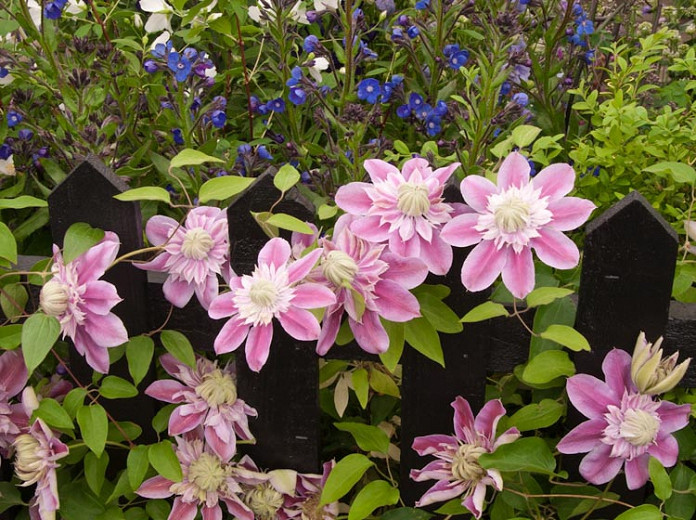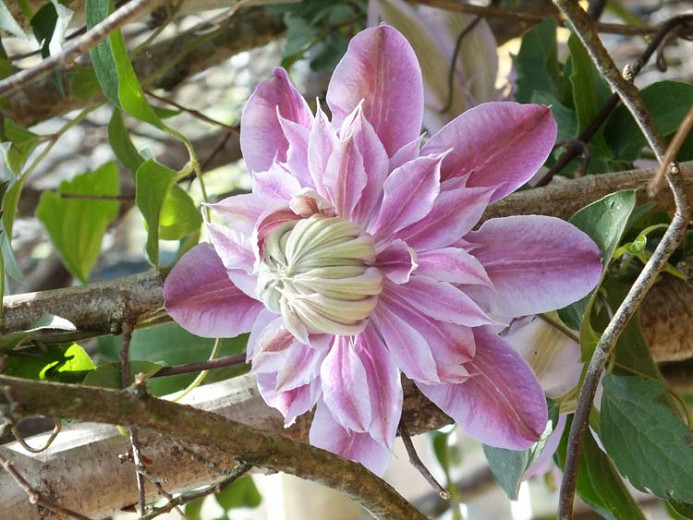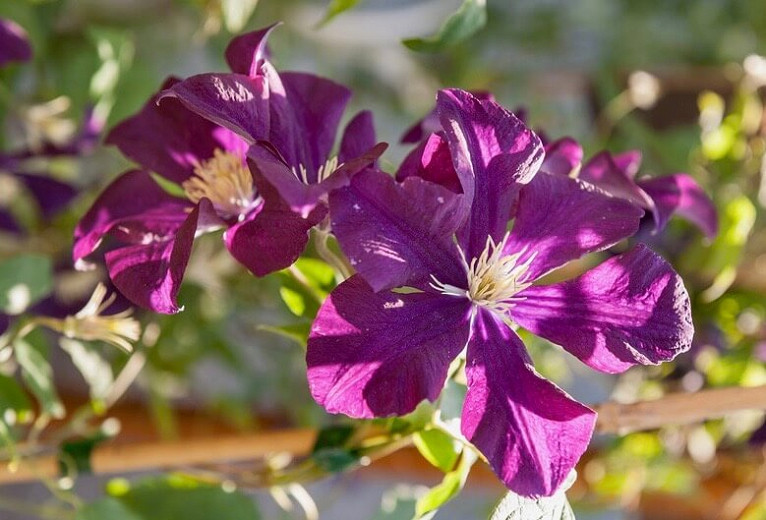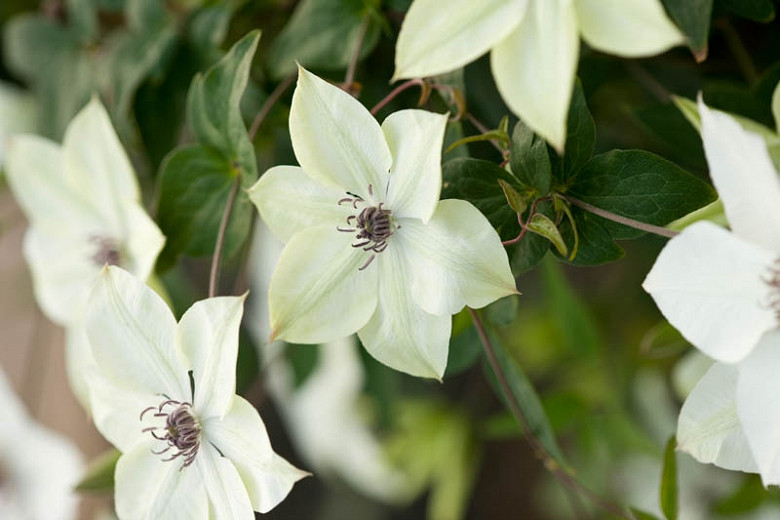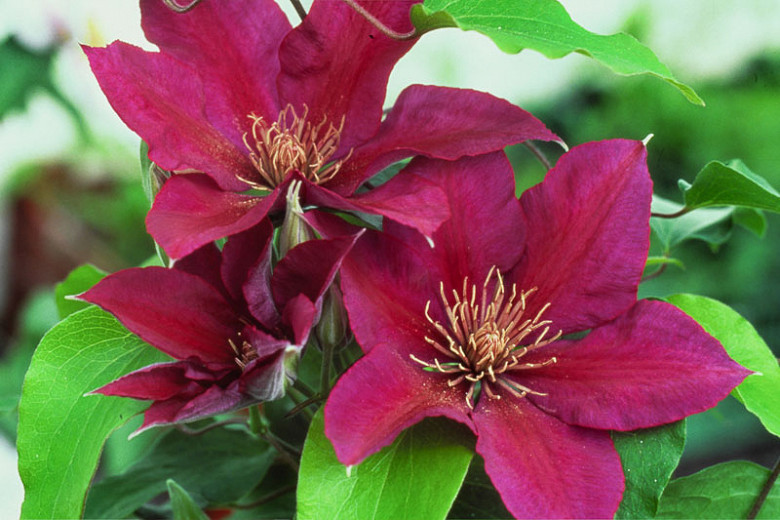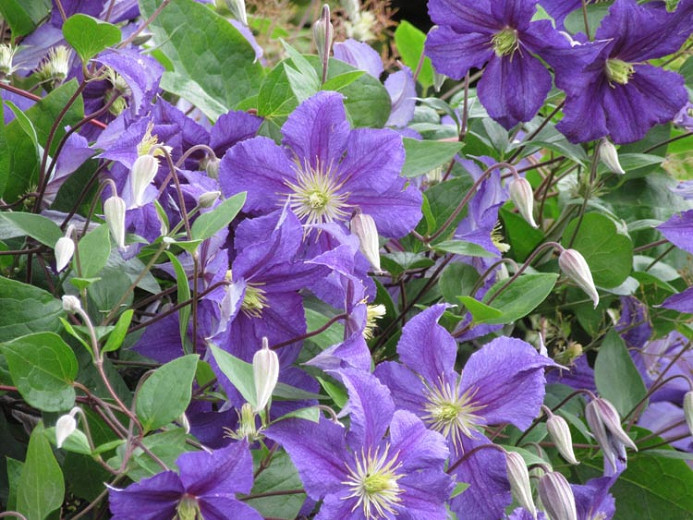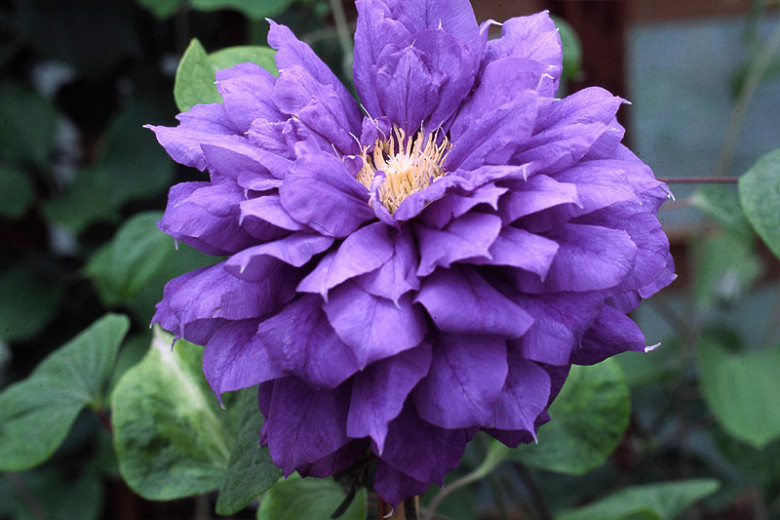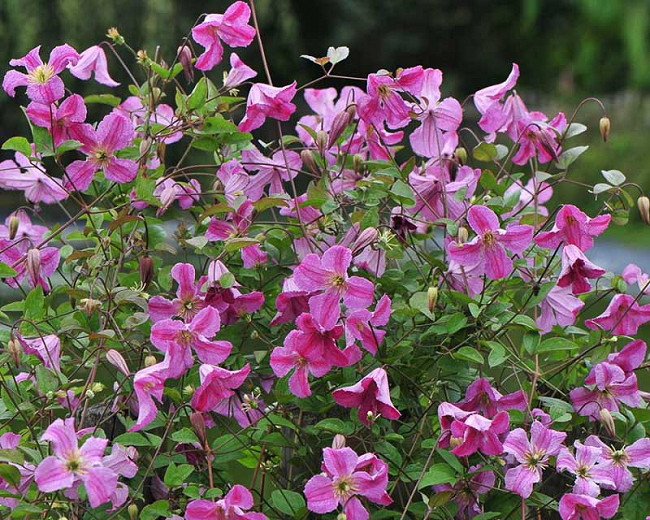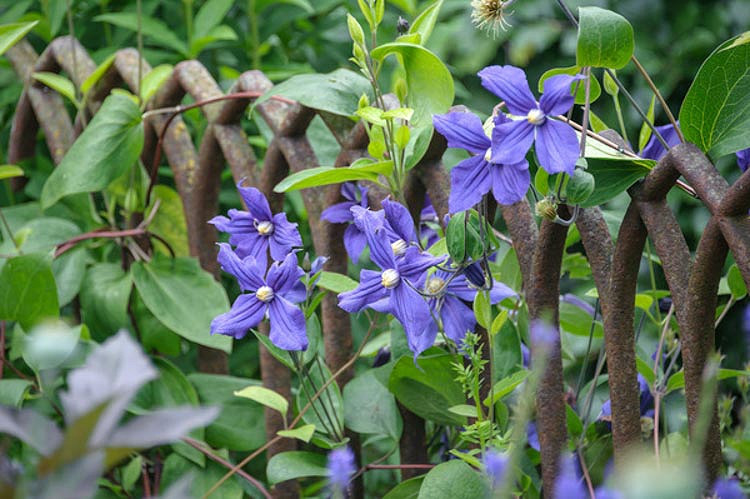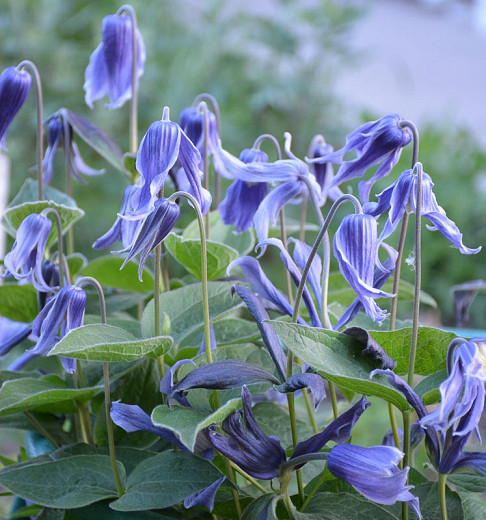Clematis Josephine (Early Large-Flowered Clematis)
Regarded as one of the best pink double clematis, 'Josephine' is a vigorous large-flowered clematis with particularly attractive blooms, 5 in. wide (12 cm). Resembling dahlias, the flamboyant flowers count up to 8 broad creamy-green and pinkish-mauve outer sepals, adorned with a dark pink center stripe. They surround a rosette of small inner ones of similar coloring. Flowering from late spring through most of the summer, the individual flowers last for up to 4 weeks. When the outer sepals fall away, the flowers still add interest with their central pompom left. The branches are clad with attractive, trifoliate leaves. This graceful clematis is perfect for meandering over fences, trellises, pergolas, or free-standing shrubs. Also ideal for growing in a container near the patio when the elegant beauty of its flowers can be admired.
- Easy to grow and cultivate, this clematis thrives in moist, well-drained soils, in full sun. Tolerates part shade, but needs full sun to produce the richest colors and to rebloom well. Ideally, Clematis prefer having their 'heads in the sun and their feet in the shade'. Keep the roots cool and shaded by other plants or add a layer of pebbles or flat stones at the base. Afternoon shade is appreciated in hot summer areas.
- Quickly grows up to 7-8 ft. long (210-240 cm).
- Deadhead after the first wave of blooms to promote new blooms.
- This Clematis belongs to the second group of Clematis – a group including Clematis which flower in early summer on short shoots developing from the last year's growth. Some flower again in late summer on new growth. These Clematis vines should be pruned in late winter or early spring before new growth starts and after the first flush of flowers in early summer.
- Prune in late winter or early spring: Remove dead or weak stems before growth begins. Check individual stems from the top down until you reach a pair of healthy buds, and prune just above them, removing the spindly or damaged growth above. Avoid heavy pruning or flowers will be lost
- Then prune again after the first flush of flowers: To encourage a second flush of flowers later in the season prune back some stems by cutting to large buds or a strong side shoot immediately below the blooms. Top-heavy or overgrown plants can be gradually reduced over two to three seasons by pruning back harder after the first flush of flowers. They are unlikely to produce a second flush of flowers but should flower again the following year, in late spring or early summer
- Alternatively, leave clematis in this group unpruned, and then hard prune them to 30-90cm (1–3ft) from the base every three or four years in late winter (as for pruning group three). In the first year after renovation, they will only flower once.
- Toxic to dogs, toxic to cats, toxic to horses.
Requirements
| Hardiness | 4 – 11 |
|---|---|
| Heat Zones | 1 – 9 |
| Climate Zones | 2A, 2B, 3A, 3B, 4, 5, 6, 7, 8, 9, 10, 11, 14, 15, 16, 17, 18, 19, 20, 21, 22, 23, 24 |
| Plant Type | Climbers |
| Plant Family | Clematis |
| Exposure | Full Sun |
| Season of Interest | Spring (Late)Summer (Early,Mid,Late) |
| Height | 7' – 8' (210cm – 240cm) |
| Spread | 3' – 4' (90cm – 120cm) |
| Spacing | 36″ – 48″ (90cm – 120cm) |
| Water Needs | Average |
| Maintenance | Low |
| Soil Type | Chalk, Clay, Loam, Sand |
| Soil pH | Alkaline, Neutral |
| Soil Drainage | Moist but Well-Drained |
| Characteristics | Showy |
| Tolerance | Deer, Rabbit |
| Attracts | Butterflies, Hummingbirds |
| Garden Uses | Arbors, Pergolas, Trellises, Beds and Borders, Patio and Containers, Small Gardens |
| Garden Styles | City and Courtyard, Informal and Cottage, Traditional Garden |
